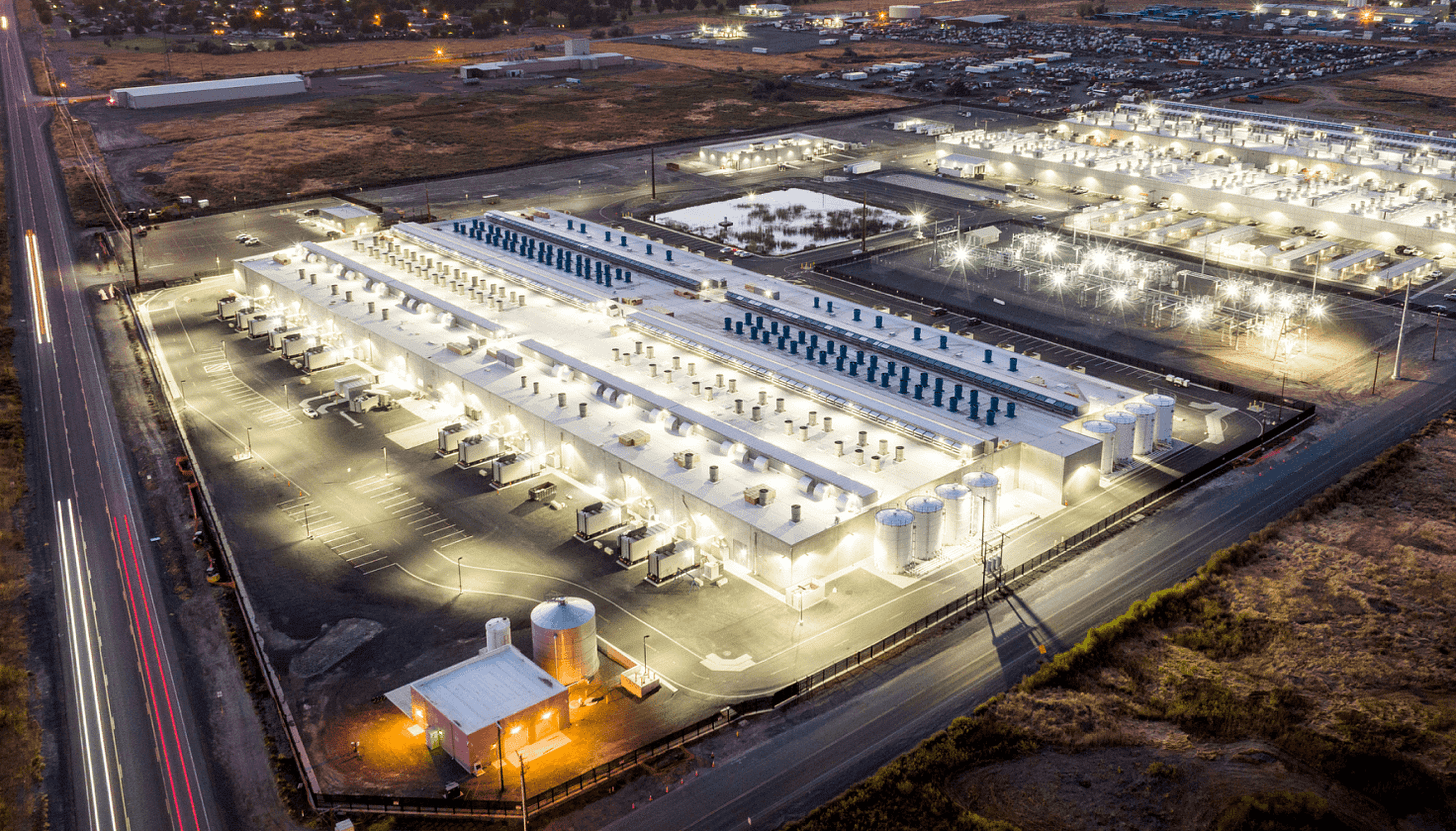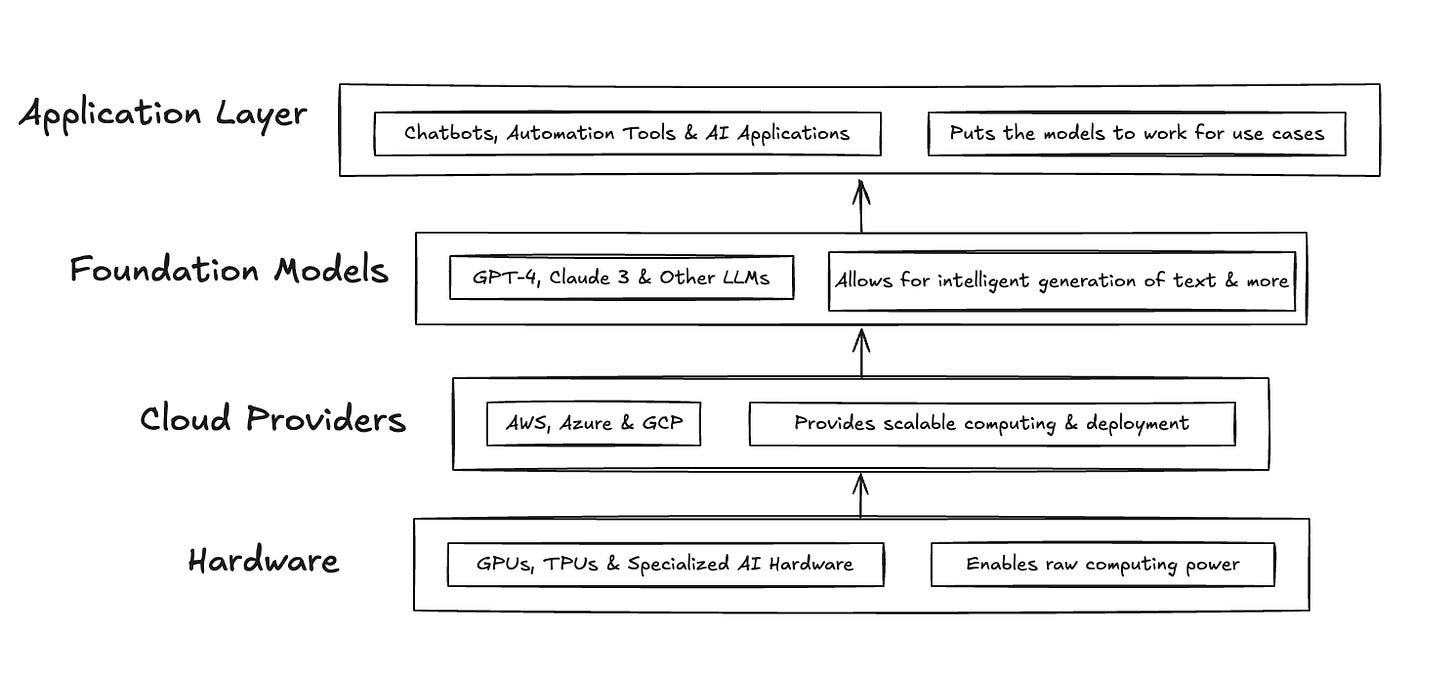AI in 2024: Opinionated Recap
A No-Code Perspective on a Year of Agents, Automation, and Accelerated Progress.
Disclaimer: The views and opinions expressed in this post are solely my own and do not reflect the views or opinions of my employer, Asana. This work is independent of my role at Asana and is intended to provide no-cost content for informational and educational purposes only.
2024 was a weird year in AI. No, scratch that – it was a noisy year in AI.
Deciphering the real advancements from the fluff was like trying to find a specific grain of sand on a crowded beach.
Even as someone deeply embedded in the field, I found it challenging to discern what truly mattered.
The tech giants, as usual, dominated the narrative, casually shifting terminology and creating a whirlwind of application layer confusion.
"Copilots" became "agents," but the real progress, the stuff that I believe real AI transformation will be built upon, was happening in the trenches, driven by micro-level AI automations.
Now I do believe in 2025 we will begin to see impactful agents, but 2024 definitely was not the “Year of the Agent” - despite how many times you might have heard “agent-this” or “agent-that”.
In this post, I'll dissect 2024 from my perspective – a no-code builder focused on practical AI application.
I aim to:
illuminate the history and evolution of buzz words like "AI agents"
highlight where the industry made genuine strides
provide a clear roadmap for no-code creators to embark on their AI journey at the beginning of 2025
My 2024: Helping to build the AI Future at Asana (One Chatbot at a Time)
My journey into the heart of AI began in early 2024. My goal: deploy AI across Asana's business operations – marketing, sales, customer success, and beyond. I faced two major hurdles:
The Tech Gap: We had zero internal AI use cases deployed. We were building from the ground up, with no blueprint. We had a lot to learn, and even more to build.
The Fear Factor: AI was met internally with skepticism and uncertainty. Employees were unsure how to use it, questioned its reliability, and, frankly, were a bit scared of it. This wasn't unique to Asana; it was a common sentiment for every company I spoke with.
To conquer the tech challenge, I devised a simple four-stage internal AI strategy with progressively more advanced architectures to match the internal education we were also rolling out. This strategy was:
Basic Chatbots: Simple, conversational interfaces for specific tasks (writing an email or blog, analyzing data, thinking through your annual review).
Chatbots with RAG (Retrieval-Augmented Generation): Empowering chatbots to access and reason over specific documents or large datasets.
AI Workflows/Automated Chatbots: Linking multiple chatbot interactions into automated sequences.
Custom AI Applications/Copilots: Combination of multiple AI workflows into a custom action based interface.
We actually kickstarted our chatbot journey by developing an internal "chatbot store" before OpenAI launched their GPTStore thanks to a hackathon project I had co-created on with two amazing colleagues.
Did we inspire them? I like to think so! ;)
Every Asana employee could create, use, and distribute their own custom AI chats at the start of the year.
To address the human element, we needed a two-pronged strategy:
Education & Empowerment: We invested heavily in internal AI education, focusing on prompt engineering, chatbot development, and demystifying the technology.
Identify Use Cases & Build MVPs: I immersed myself in various teams, understanding their "jobs to be done" (writing copy, translating content, analyzing data), and mapping those tasks to AI's capabilities. We then built minimum viable products (MVPs) to showcase the potential.
This dual approach led to massive chatbot usage at Asana in early 2024. We quickly had tens of thousands of API calls going to the chatbots - daily - from less than 2k employees.
We quickly moved to phases 2 and 3 of our roadmap with confidence and haste.
Chatbots with RAG were a natural evolution to unlock additional use cases in an interface our employees were already familiar with.
For example, Asana's product documentation is incredibly complex (think 1,000+ pages), making it impossible to memorize. We started deploying chatbots with RAG, giving them access to specific documents and enabling them to answer complex product questions, as well as providing support for competitive intel research, ideal customer profile (ICP) research, and much more.
But we soon hit "chatbot fatigue."
For high-volume tasks, interacting with a chatbot repeatedly becomes tedious and inefficient.
The amount of copy and pasting data in and copy and pasting data out was not the promise of AI I had in my mind.
This is where phase 3, AI workflows (or automated chatbots) came in - and the real impact kicked in.
AI workflows allow you to combine multiple chatbot interactions into a single automated flow.
For example, instead of triggering a chatbot 20 times to translate a blog post into 20 languages, you could upload one blog post, and the workflow would translate it into multiple languages all at once, and then triage each translation to the copywriter responsible for editing and approving it.
This is where I started evaluating AI automation tools. Ultimately, we decided that developing our own, which turned into Asana AI Studio, was the path forward.
By the end of 2024, Asana was fully immersed in its automated AI phase.
The customer education team using AI workflows to develop Help Center Articles, our security team using AI to scale their security alert review efforts, and our customer success organization onboarding new customers much faster with AI helping by providing historical context on the relationship with the customer, just to name a few.
I’ll share many more use cases in the next few posts - stay tuned…
Understanding the AI Stack: What No-Code Builders Need to Know
Before we delve deeper into the industry's narrative, let's break down the AI stack top to bottom:
Hardware: The physical infrastructure (GPUs, TPUs) that powers AI. Think Nvidia. This hardware is needed for training (building the model) and inference (the model responding to your chat message).
Cloud Providers: The companies (AWS, Microsoft Azure, GCP) that provide the infrastructure and services to run AI applications. Think large data-centers filled with the hardware.
Foundation Models: The underlying large, pre-trained models (like GPT-4, Claude 3) that research labs like Anthropic and OpenAI develop.
Application Layer: The software that leverages foundation models to deliver specific functionalities (chatbots, automation tools, etc.).
As no-code builders, our primary focus should be on top two layers:
Foundation Model Evolution: How intelligent are the leading models today?
Application Layer Innovation: How are the tools that enable us to build with these models evolving?
Foundation Models: A Year of Explosive Growth
As a no-code builder, I have no desire to develop my own foundation models or engage in extensive fine-tuning in the early days of 2025.
The building of custom models is simply not viable for most no-code creators, while the no-code tech for this is getting pretty good (specifically Google AI Studio).
There will be a time for cost optimization and potentially migrating use cases to open-source models, but that time is not now.
The frontier of what's achievable is expanding so rapidly that it's more advantageous to focus on building new solutions rather than optimizing existing ones.
And let me tell you, foundation models experienced explosive growth in 2024. They became more intelligent, gained access to new tools (image/video generation, document creation), and could process larger datasets.
The year culminated in a major announcement: OpenAI unveiled their new "o3" reasoning model, which reportedly shattered existing AGI benchmarks. While I haven't personally tested it yet, if the claims hold true, it represents a paradigm shift in what's possible. 2025 is poised to be a transformative year.
Anthropic, Google, and Meta made significant strides in closing the gap with OpenAI, but OpenAI retains its leadership position as we enter 2025. The competition is heating up, and that's good news for all of us (prices come down, intelligence goes up).
The Application Layer: Where "Copilots" Stumbled and "Agents" Emerged from the Startup Trenches
Now, let's turn our attention to the application layer – the most critical layer for us no-code builders.
In early 2024, Microsoft and Salesforce were heavily promoting "copilots." But these initial copilots were, to put it mildly, underwhelming. They lacked quality, and accomplishing tasks with them was often frustrating.
When designing AI systems, you can either specialize (build a system to excel at one specific task) or generalize (build a system to handle many tasks, but none of them exceptionally well). Early copilots fell into the generalization trap. They attempted to do too much, resulting in subpar performance and a loss of user trust.
This, in my view, is why the initial copilot push faltered. And it underscores a vital lesson: under promise and over deliver in the AI era.
Overpromising led many major players to undertake significant rebranding efforts throughout 2024.
The Rise of the AI Agent: From Startup Buzz to Big Tech's Lexicon
And this is where the "AI agent" narrative truly takes off. But unlike the "copilot" hype, which originated from the top down, the "agent" story began in the trenches, driven by innovative startups.
The term "AI agent" wasn't born in 2024. Its modern usage, particularly in the context of large language models (LLMs), can be traced back to early 2023.
As highlighted in a Cohere Agent Build Day presentation, "agent fever" truly ignited in April 2023, fueled by projects like AutoGPT, which rapidly surpassed established projects like Bitcoin and Kubernetes in GitHub stars.
This surge in interest was further propelled by the concept of "agentic AI," a new class of AI championed by Andrew Ng in June 2023. Unlike traditional AI tools that passively respond to commands, agentic AI was envisioned to proactively tackle complex tasks, such as data analysis, outcome prediction, and even autonomous decision-making.
But what are "agents" really?
I like this definition from Anthropic.
Now I personally have a very high bar for what a real Agent looks like - and very few products I experimented with hit the bar for me in what they promised to the quality of delivery (and we’re seeing this from the CRAZY churn numbers coming out of some of these AI Agents startups).
Startups Leading the Charge
By 2024, "AI agent" had become a buzzword among startups raising funds from VCs. Companies like Pixel Robotics, Brance, and Firsthand were developing AI agents for warehouse automation, sales conversions, and consumer engagement, respectively.
The potential applications of AI agents extended beyond typical business functions.
Startups were exploring how these agents could revolutionize various sectors, including healthcare and education. In healthcare, AI agents were being developed to detect diseases early and improve supply chains. In education, they could assist teachers in creating personalized learning plans.
As the AI agent landscape matured, different stages of development emerged: AI copilots (humans in the loop), autonomous AI agents (humans as supervisors), and AI agent fleets (swarms of specialized autonomous agents).
All of this while AI workflows were the most logical option for short to medium term impact.
Big Tech Takes Notice (and Rebrands)
While startups were pioneering AI agents, big tech initially focused on "AI copilots." However, by late 2024, a shift began.
Gartner predicted that AI agents would be the top strategic technology trend for 2025. This, coupled with the growing success of startups, pressured big tech to adapt.
Major tech companies, including Microsoft, Google, and Salesforce, started incorporating "AI agent" into their marketing and product strategies. This shift was driven by:
Increased Capabilities: Claimed advancements in AI technology, particularly in LLMs, enabled more sophisticated agents (but most importantly - is the quality of output actually better?)
Competitive Pressure: Startups were gaining traction in the media, forcing big tech to keep pace.
Marketing Advantage: "AI agent" resonated more strongly with users, conveying a sense of intelligence and autonomy.
Microsoft, for instance, announced ten AI agents for its Microsoft 365 Copilot, designed to handle a wide range of tasks. Salesforce also embraced the agent paradigm, highlighting their potential to automate sales processes and improve customer engagement.
The Copilot vs. Agent Debate
The transition from "copilot" to "agent" wasn't without controversy. Salesforce CEO Marc Benioff criticized Microsoft's rebranding, suggesting it was a response to the perceived failure of its AI products. However, others argued that the shift was a natural evolution, reflecting the increasing autonomy of AI systems.
The debate highlighted the evolving understanding of AI's role. While copilots were seen as assistants, agents were perceived as more independent entities. This shift had implications for how users interacted with AI and integrated it into their workflows.
Conclusion: Navigating the AI Future as a No-Code Builder
2024 was a year of both hype and genuine progress in AI. While the "agent" narrative was amplified by big tech's rebranding efforts, the underlying technology, pioneered by startups, continued its rapid advancement.
As no-code builders, I recommend our focus should be on leveraging the best foundation models and building, simple practical applications with the tools available. We must be discerning of marketing hype from the loudest AI vendors in the room and concentrate on solving real problems with tangible solutions.
The future of AI is bright, particularly for those of us who can bridge the gap between technical possibility and practical application.
I hope this recap provides a little bit more understand of how the buzzwords you're hearing in the media are connected to what's happening on the ground floor of the industry.
Where to Go From Here:
Master the Fundamentals: Grasp the basics of AI , including prompt engineering, chatbot development, and data retrieval methods.
PS: To get a bit more specific on beginning building to start 2025, I recommend starting with chatbot development. Take a free training course provided by companies like Asana, Writer, or Google to learn more about use case identification and prompt engineering (writing clear instructions for AI that set it up for success). More to come in a future post
Explore Automation Platforms: Experiment with tools like Zapier, Clay, Mind Studio, and the emerging AI Studios from companies like Salesforce and Asana.
Identify Use Cases: Seek out repetitive, time-consuming tasks within your organization or personal life that could benefit from AI automation.
Start Small, Iterate Rapidly: Build MVPs, test them, gather feedback, and iterate. Embrace experimentation and learn from failures.
Stay Informed, But Filter the Noise: Follow reputable sources, but be critical of marketing hype. Focus on what's genuinely possible and useful today.
CTA:
If you're passionate about understanding the practical applications of AI, particularly from a no-code perspective, please share this post with someone who know thinking about AI!
Please don't forget to like and subscribe to stay updated on the latest developments and insights. I'm so grateful your support.
My next post will be shared out of January 29 - you’re gonna make sure you don’t miss that one…
Lastly but most importantly, thanks for reading and being apart of the Information Processed community. Let me know if you have any questions or topics you’d like me to dive into.














